Tracking Best Practices: Recording Percussion with Bashiri Johnson
Brooklyn had extra boom on a recent summer day. That’s when one master percussionist, Bashiri Johnson, hosted another, Larry McDonald, for a recording session.
But this tracking date was no ordinary meeting of the minds. Amazingly, it was the first time that these two rhythmic innovators had ever met, despite them both having spent decades with New York City as their home base.
Combine their track records for an epic discography that defines modern music. For the Bedford-Stuyvesant native Johnson that’s Michael Jackson, Beyoncé, Whitney Houston, Donald Fagen, Madonna, Steve Winwood, Rolling Stones, Celine Dion, Rancid, Angelique Kidjo, Gloria Estefan, Paul Simon, Barbara Streisand, Spice Girls, Miles Davis, Ray Charles, Jay Z, Eric Clapton, Sade, Lionel Richie, Kenny Garrett, Aretha Franklin, Sting, Queen, Gypsy Kings, Laura Nyro, Peter Paul & Mary, Bob Dylan, James Taylor, Nina Simone, Herbie Hancock, Luther Vandross, and many more.
Now add in Jamaican expatriate McDonald’s expertise, spanning Bob Marley, Peter Tosh, Dr. Ernest Ranglin, Gil Scott-Heron, Lee “Scratch” Perry, Taj Mahal, Bad Brains, New York City Ska Orchestra, Rocksteady 7, Dub Is A Weapon, and countless others.
There are thousands of hours of music history – recorded and live – between this percussive pair. So when they finally connected at Johnson’s private studio overlooking Grand Army Plaza, The Lab-Brooklyn, rhythmic intricacy was inevitable. After Johnson laid down his parts for the song “Love Is My Color” from his upcoming album as half of the duo Rhythm Healing (label: LIFE IN RHYTHM MEDIA), he invited McDonald to step up to the mic.
Throughout his massive career of recording at the world’s top studios, Johnson has picked up plenty of best practices to apply at The Lab-Brooklyn, in conjunction with his engineer Roc Isaacs. “The biggest lesson I’ve learned about recording percussion in my career is: Percussion works well when it’s in the track, not on the track,” Johnson observes. “In other words, I’ve discovered that percussion is perfect when blended and performed to work within a song, as opposed to being thrown on top of it, just for the sake of hearing percussion.
“I like my percussion performances to breathe and have air. I like engineers who allow the percussion instruments to have space, and not be so in your face.”
Here’s how the session unfolded, with hard-won tips from Johnson on how to record percussion.

My studio, The Lab-Brooklyn, is set up to capture the full range of my percussion performances. We easily flow between mono, stereo, different mics, and various positioning, striving to capture a pristine and organic sound in the computer for my percussion. We record “in the box” into Pro Tools, the Yamaha O2R is our board being used mostly just for monitoring, our speakers are Yamaha NS 10’s, headphones are Sennheiser and Roland AIRA. My engineer Roc Isaacs and I have an almost unspoken ebb and flow when recording. Roc kinda knows my pace and process, and he’s an amazing producer and mixer in his own right. Roc usually brings all his skills to bear when we work.

“In my studio I have many, many hundreds of percussion instruments, toys, effects, and sounds. When I choose instruments I look for character and voice. I like instruments that have a sound that is memorable and interesting, as well as having a voice that sucks you in. I’m always on the hunt for new sounds, it’s an obsession.”
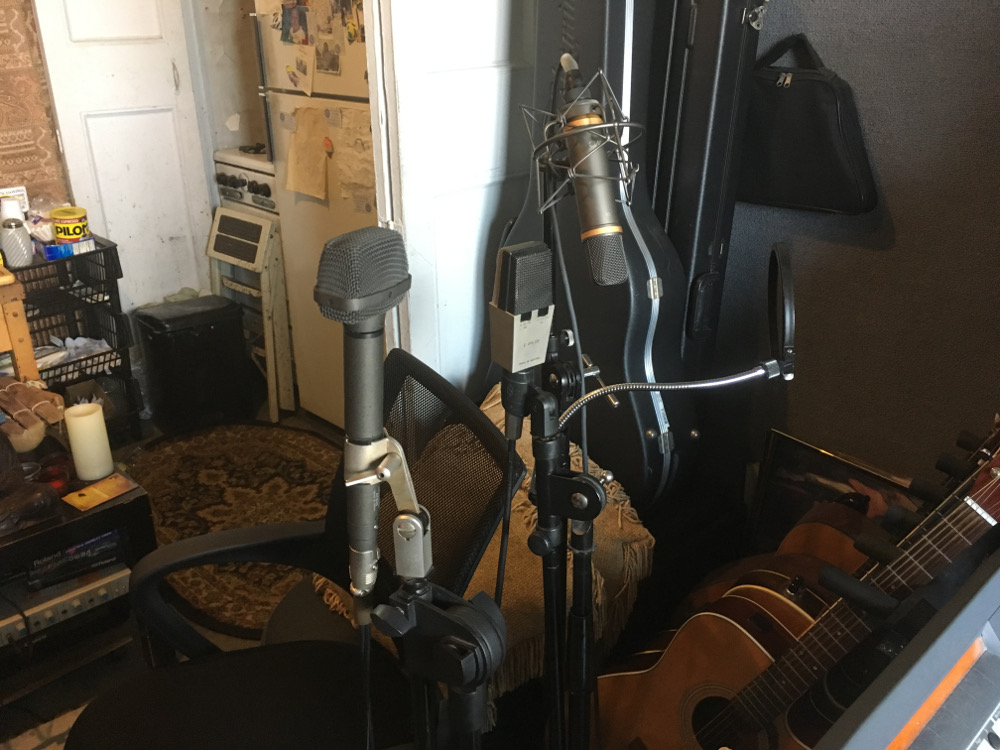
That’s a Microtech Gefell M990 Tube vocal mic, an Audio Technica AT822 Stereo mic, and an AKG 414. I use my Neumann U 87 on almost everything, including percussion, but that mic is in the shop currently. I have a vast collection of AUDIX mics which I love, and use extensively also. I like to always have a tube mic set up for vocals and instruments in mono, a stereo mic set up for instruments and perc, and an all-around mic for everything else. That’s our “go-to” mic set up. I have a couple of direct boxes for electric guitars and basses always at hand as well.

This drum is Moroccan Clay Bongoes, which sound like traditional Bongoes with a warm ceramic tone.
The mics we used were Audio–Technica AT822 Stereo mic and a Neumann 414, those two mics are sometimes our “go-to” mics. We place the mics directly over the instrument, with a slight angle, at a distance of about 12-16 inches away, to give the instrument some air to speak. I rarely close mic, unless requested to do so
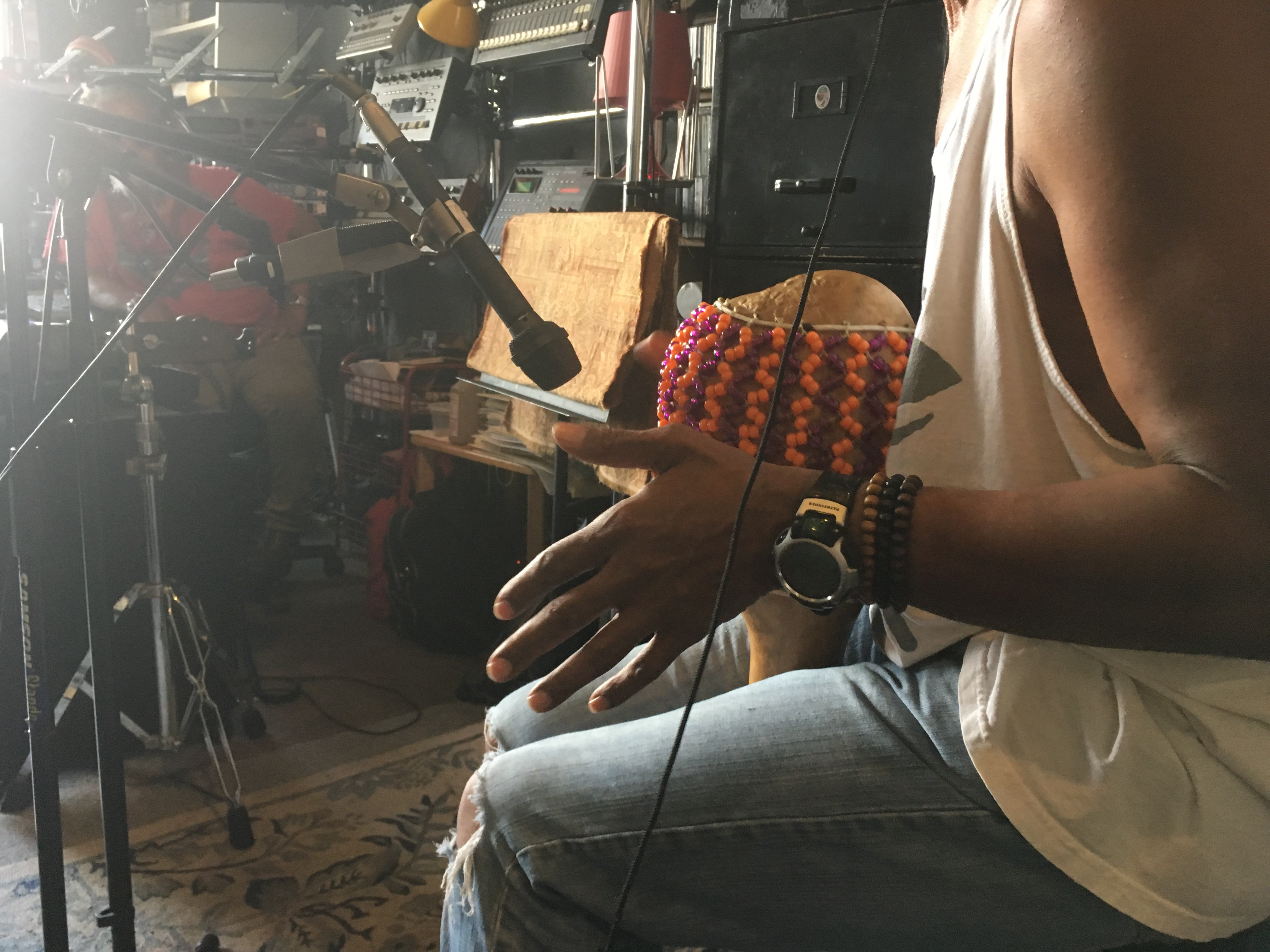
This instrument is a Shekere, it has a bright crisp sound for groove and accents. Similarly, the mics we used were an Audio–Technica AT822 Stereo mic and a Neumann 414. The mic placement was stereo mic slightly close, about six inches from where I was playing the accent groove, and the 414 about two feet away for “air.” The blending of the two mics gives warmth and crispness in the sound.
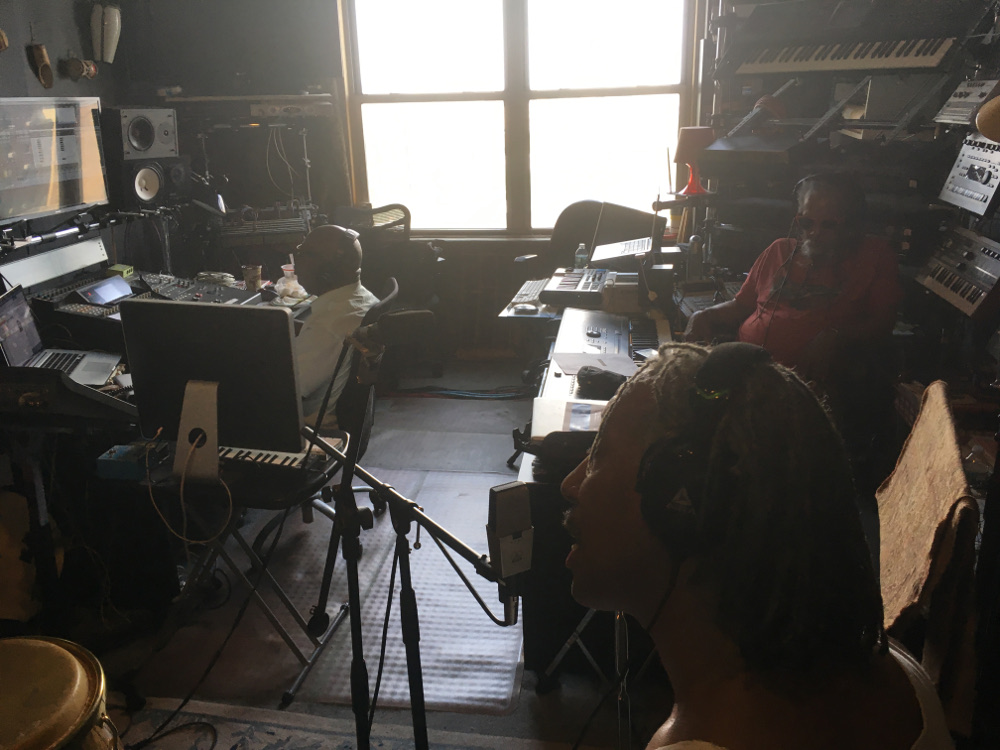
I use singing as a rhythmic tool for effects, chants, and background enhancements. I’m not a pro singer, like many of my friends, but I do have a set of vocal rhythmic effects that I use when the track calls for it.
We used the Neumann 414 to capture my vocal parts for the track, since the parts I was singing had more of a rhythmic percussive sound. I got right up on the mic, about one foot, using proximity and angle for effect.
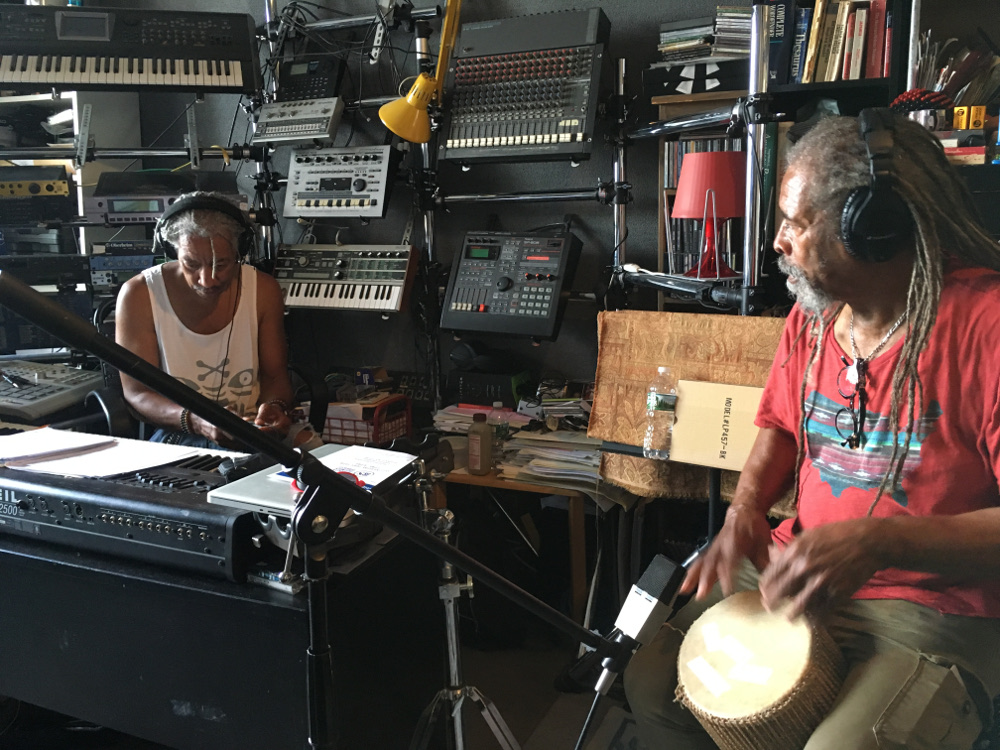
I chose a Ghanaian Hair Drum for Larry to play because I wanted him to play a 1/2 time Nyabinghi Rhythm feel for my track. Larry is a Master Percussionist and well versed in Jamaican Rhythms, so the drum I chose and the rhythm I asked him to play would work well for my track.
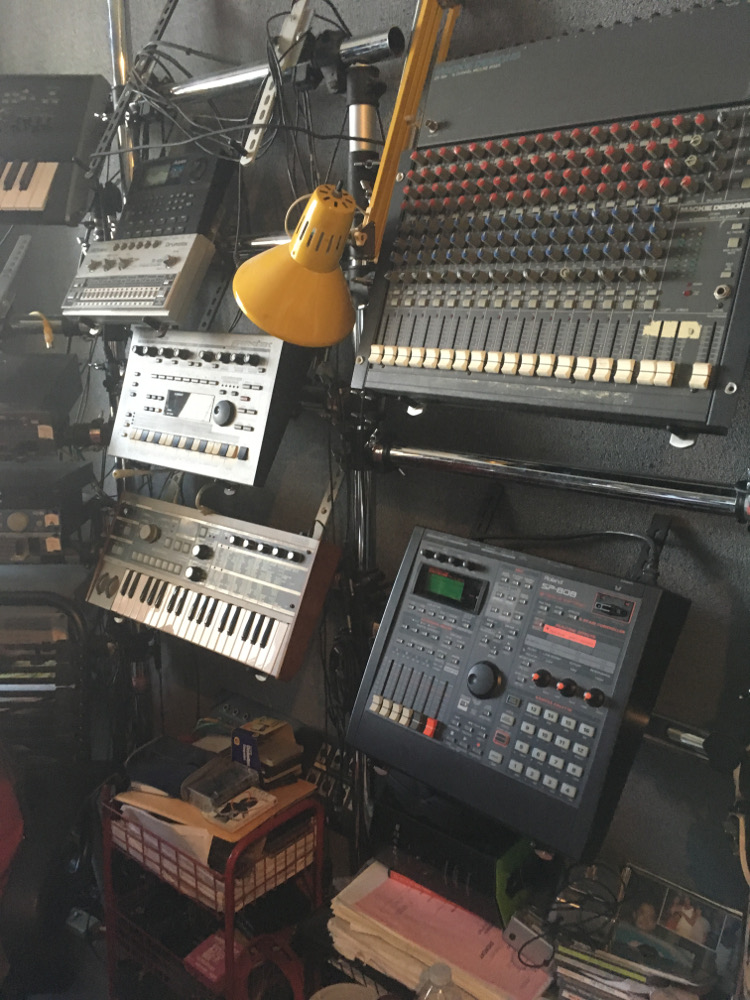
I don’t go to any of my hardware synths and drum machines on a regular basis. However, when I do use them they speak volumes for my tracks and productions. They all have personality and uniqueness.
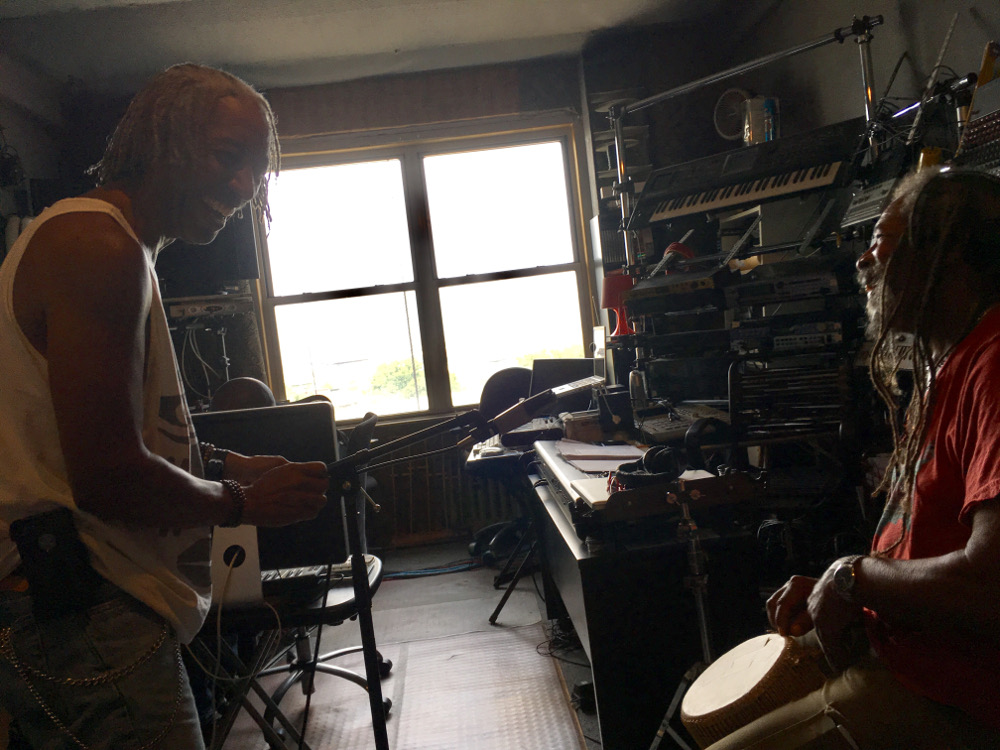
It was an incredible honor and pleasure to have met, recorded, and bonded with Larry McDonald all on the same day. His visit to my studio was one of the highlights of my summer. Larry and I are now connected brothers in rhythm.
Please note: When you buy products through links on this page, we may earn an affiliate commission.







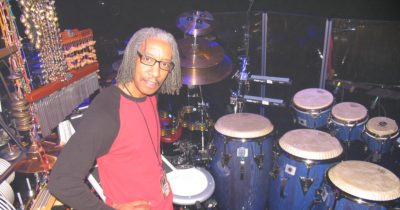
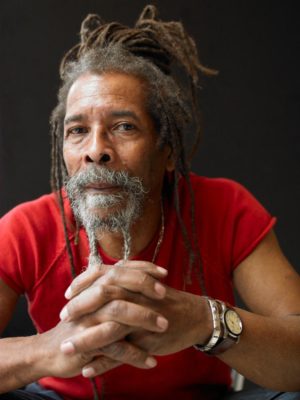
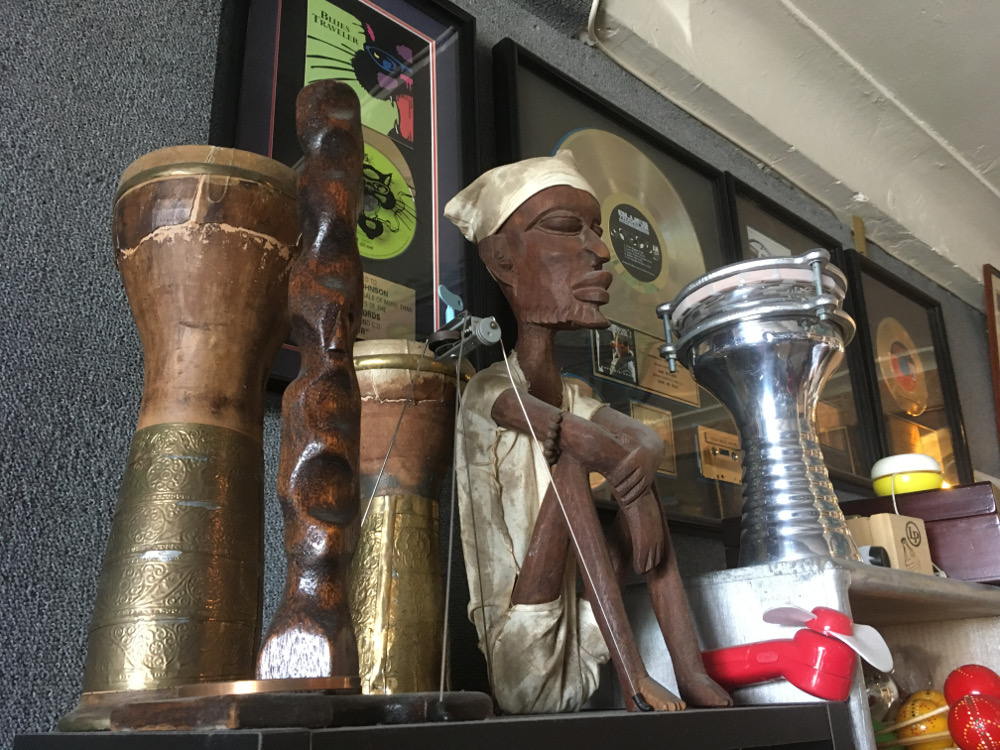
Forbes Mackay
August 14, 2017 at 1:05 pm (8 years ago)That 414 is an AKG not a Neumann.
Justin C.
August 14, 2017 at 2:47 pm (8 years ago)That is true! One of our editors should have caught that. Thanks for the catch. It’s fixed in the story now.